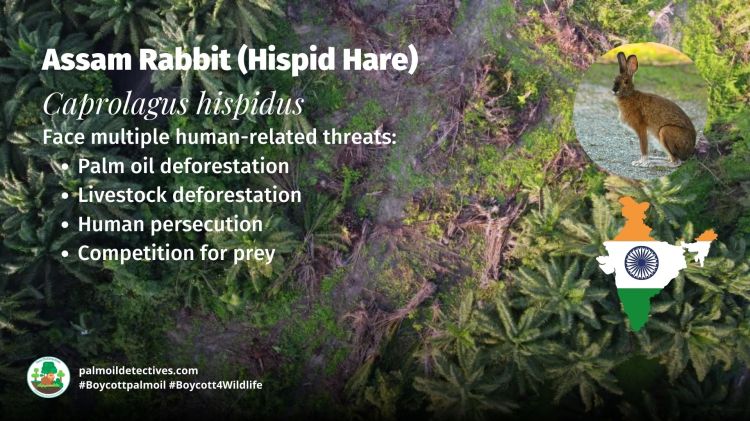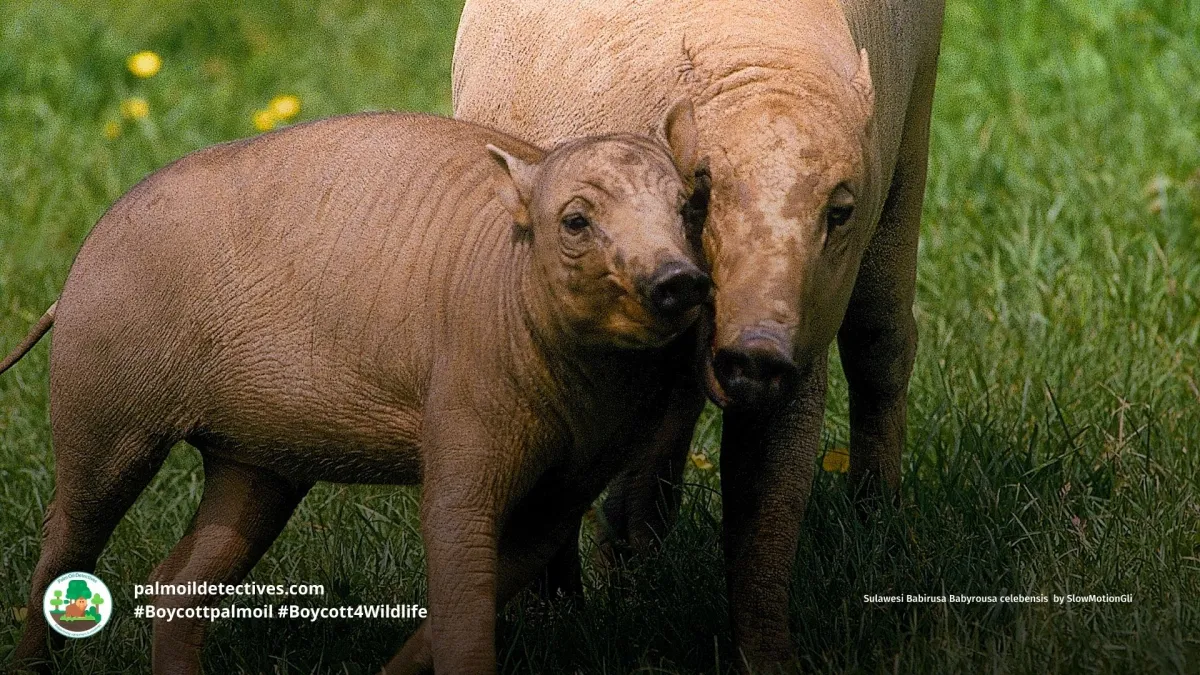Assam Rabbit (Hispid Hare) Caprolagus hispidus
Shy, solitary and wary Hispid hares are most active during dawn and dusk. They often take shelter from predation in tall grasses and the burrows of other animals. They are endangered by multiple human-related threats including palm oil deforestation in the Assam region of India and they also hold to survival in Bhutan and Nepal.
#Assam Rabbits AKA Hispid Hares are regal and rare species endangered by multiple threats including #palmoil #deforestation in #Assam, #India. Help them and #Boycottpalmoil #Boycott4Wildlife in the supermarket.
Tweet
Hispid Hares hang on to survival, facing multiple human-related threats including #palmoil expansion in #Assam India. Fight for their survival and #Boycottpalmoil #Boycott4Wildlife
Tweet
Endangered
Extant (resident)
Bhutan; India (West Bengal, Uttar Pradesh, Assam); Nepal
Presence Uncertain
Bangladesh; India (Madhya Pradesh, Bihar)
Appearance & Behaviour
A medium sized hare, they are typically 47 cm in height, with males being slightly smaller than females. Females weigh an average of 2.5kg, with pregnant females weighing an average of 3.2kg. They possess a bristly haired coat with a dark brown and black back and a creamy white abdomen. This enables them ample camouflage in a grassland environment.



Threats
The primary threat to Hispid Hare populations is habitat loss, caused by encroaching agriculture, logging, summer flooding, and human development (Bell et al. 1990).
IUCN RED LIST
The Indian Hare faces multiple anthropogenic threats including:
- Palm oil expansion: A significant part of their range is earmarked for destruction for palm oil.
- Climate change: extreme weather, fire and flooding as a result of climate change
- Livestock grazing and other agricultural expansion.
- Competition with other animals for food in a shrinking range.
- Human persecution.


Habitat
Hispid hares are found infrequently in Bangladesh, India, Nepal, and possibly Bhutan. They live in tall grasslands and during the dry season. These areas are vulnerable to extreme weather events like fires and floods which are exacerbated by climate change. When these areas are under threat, the Hispid hare retreats to marshes and areas close to riverbanks.
Diet
Hispid hares are herbivores feeding mainly on roots of grasses, shoots, bark, and occasionally crops.
Mating and breeding
More research is needed to understand the mating and reproductive behaviour of these hares. From limited research, it is understood that they have a small litter size and that they are crepuscular, preferring both dawn and twlight for hunting.
Support Assam Rabbit by going vegan and boycotting palm oil in the supermarket, it’s the #Boycott4Wildlife
You can support this beautiful animal
Support the conservation of this species
This animal has no protections in place. Read about other forgotten species here. Create art to support this forgotten animal or raise awareness about them by sharing this post and using the #Boycottpalmoil #Boycott4Wildlife hashtags on social media. Also you can boycott palm oil in the supermarket.
Further Information
Aryal, A. & Yadav, B. 2019. Caprolagus hispidus. The IUCN Red List of Threatened Species 2019: e.T3833A45176688. https://dx.doi.org/10.2305/IUCN.UK.2019-1.RLTS.T3833A45176688.en. Accessed on 11 November 2022.
Hispid Hare or Indian Hare on Animalia.bio
Hispid Hare/ Indian Hare/ Assam Rabbit on Wikipedia


How can I help the #Boycott4Wildlife?
Contribute in five ways
1. Join the #Boycott4Wildlife on social media and subscribe to stay in the loop: Share posts from this website to your own network on Twitter, Mastadon, Instagram, Facebook and Youtube using the hashtags #Boycottpalmoil #Boycott4Wildlife.
2. Contribute stories: Academics, conservationists, scientists, indigenous rights advocates and animal rights advocates working to expose the corruption of the palm oil industry or to save animals can contribute stories to the website.
3. Supermarket sleuthing: Next time you’re in the supermarket, take photos of products containing palm oil. Share these to social media along with the hashtags to call out the greenwashing and ecocide of the brands who use palm oil. You can also take photos of palm oil free products and congratulate brands when they go palm oil free.
4. Take to the streets: Get in touch with Palm Oil Detectives to find out more.
5. Donate: Make a one-off or monthly donation to Palm Oil Detectives as a way of saying thank you and to help pay for ongoing running costs of the website and social media campaigns. Donate here
Forgotten Species on Palm Oil Detectives
These species have no known conservation actions in place and are silently disappearing before we can save them. Do something about it by boycotting supermarket brands linked to tropical deforestation. Join the #Boycott4Wildlife













